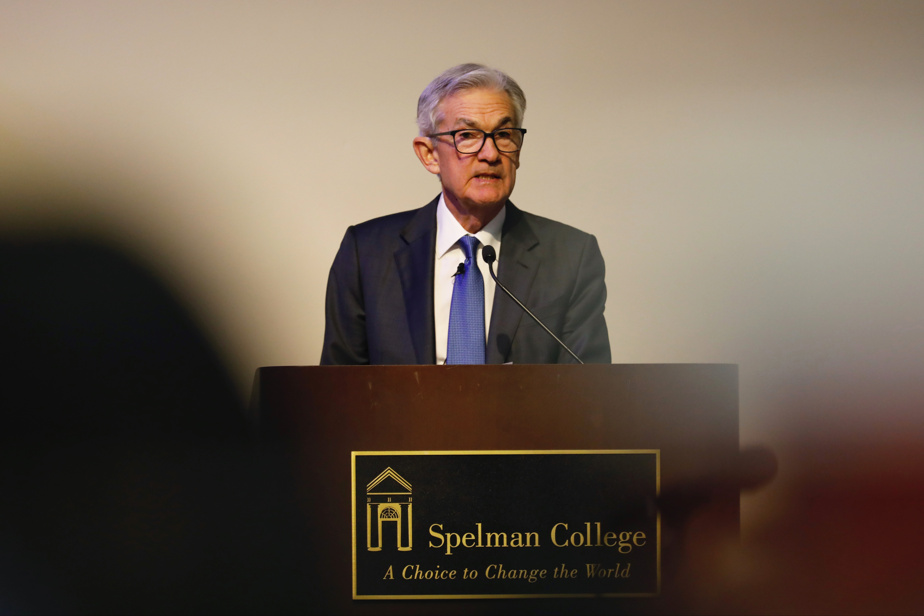When Federal Reserve Chairman Jerome Powell takes the stage for his post-meeting news conference Wednesday, investors and many Americans will be focused on one question: When will the Fed begin cutting interest rates? interest ?
Policymakers sharply increased borrowing costs between March 2022 and July to a 22-year high of between 5.25% and 5.5% to control rapid inflation by cooling the economy . They have paused since then, waiting to see how the economy responds.
But with inflation moderating and the job market growing more modestly, Wall Street increasingly expects the Fed to begin cutting interest rates soon, perhaps even during of the first three months of 2024.
Fed officials have been reluctant to say when that might happen, or even to promise that they are done raising interest rates. Indeed, they still fear that the economy will restart or that the progress made in controlling inflation will stall. Politicians do not want to declare victory only to have to reverse their decision.
Economists say Mr. Powell is likely to strike a less than engaging tone this week, given all the uncertainty. After their decision on Wednesday, Fed officials will release a new quarterly summary of economic projections showing where they think rates will be at the end of 2024, which will indicate how many, if any, rate cuts they expect . But the projections will give little indication of the exact date of these declines.
The Fed’s forecasts and Wall Street’s expectations could mask a harsh reality: Next year’s interest rates can vary widely depending on how the economy performs over the next two months.
“We’re kind of at the peak of uncertainty,” said Michael Gapen, chief U.S. economist at Bank of America.
This week should hold no surprises: Gapen says the Fed is likely to keep rates steady and its options remain open. But for next year, he and other economists say, there are three possible scenarios – each of which could require a very different policy prescription.
For months, interest rates have weighed on the housing market, discouraged consumers from making major purchases with borrowed money and made it less attractive to expand a business – and the effects could start to show. accumulate.
If the economy slows significantly at the end of the year and early next year, that could prompt the Fed to cut interest rates earlier than expected, to avoid slowing growth so much. abruptly as the economy plunges into recession.
If employers cut jobs in December, the Fed could cut interest rates as early as early next year, Mr. Gapen said. According to him, this would be an “easy” scenario for the Fed: it would be obvious that rates must fall.
But that’s not what most economists expect.
Most forecasters say the economy should continue to grow late this year and early next year, but more slowly than in recent quarters. This gradual slowdown should allow inflation to continue to moderate.
In such a scenario, the key question for the Fed will be when to cut rates – and why. Would it make sense to lower borrowing costs just because inflation is falling, even if economic data mostly holds up?
Fed officials, including John Williams, president of the Federal Reserve Bank of New York, and Christopher Waller, Fed governor, have suggested that might be the case. The logic is quite simple: Interest rates are not adjusted for inflation, so as inflation falls, rates could begin to weigh more heavily on the economy in adjusted terms.
“If we see that disinflation continues [and] we are convinced that inflation is really falling,” Mr. Waller said at a conference on November 28, “we could start lowering the policy rate just because inflation is lower. »
The question is when. Waller suggested it would take several months of steady progress for officials to feel comfortable.
This brings us to the last possibility. Since 2021, economists have regularly been surprised by the persistence of economic data and price increases, and this could happen again.
If the economy and inflation are stronger than expected, the solution is simple. The authorities are likely to raise rates further, as they have repeatedly indicated they are prepared to do.
But more complex scenarios are possible. The economy could recover even as inflation slows, for example, raising the threat of rising prices due to strong demand. “I think they would be more reluctant to cut rates in that case,” said Michael Feroli, chief U.S. economist at JPMorgan Chase
Or, progress on inflation could stall even as the economy slows, forcing the Fed to weigh the risk of a recession against persistently high inflation.
The many possibilities are why the Federal Open Market Committee (FOMC), which sets Fed policy, is trying to keep its options open.
“Having come so far so quickly, the FOMC is moving cautiously,” Mr. Powell said in a Dec. 1 speech.
